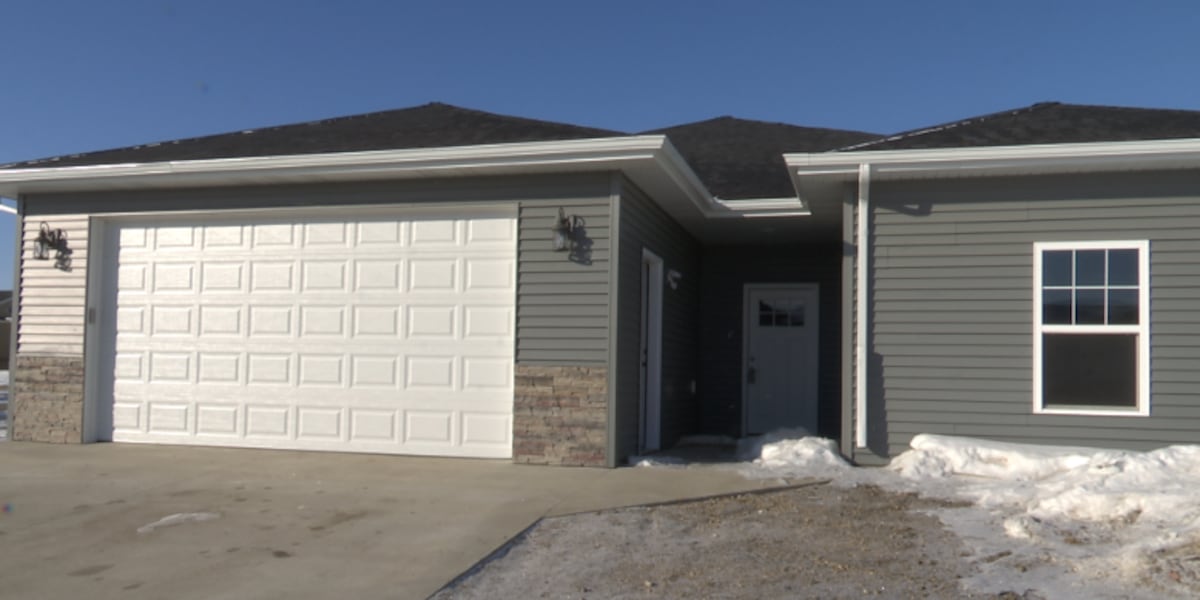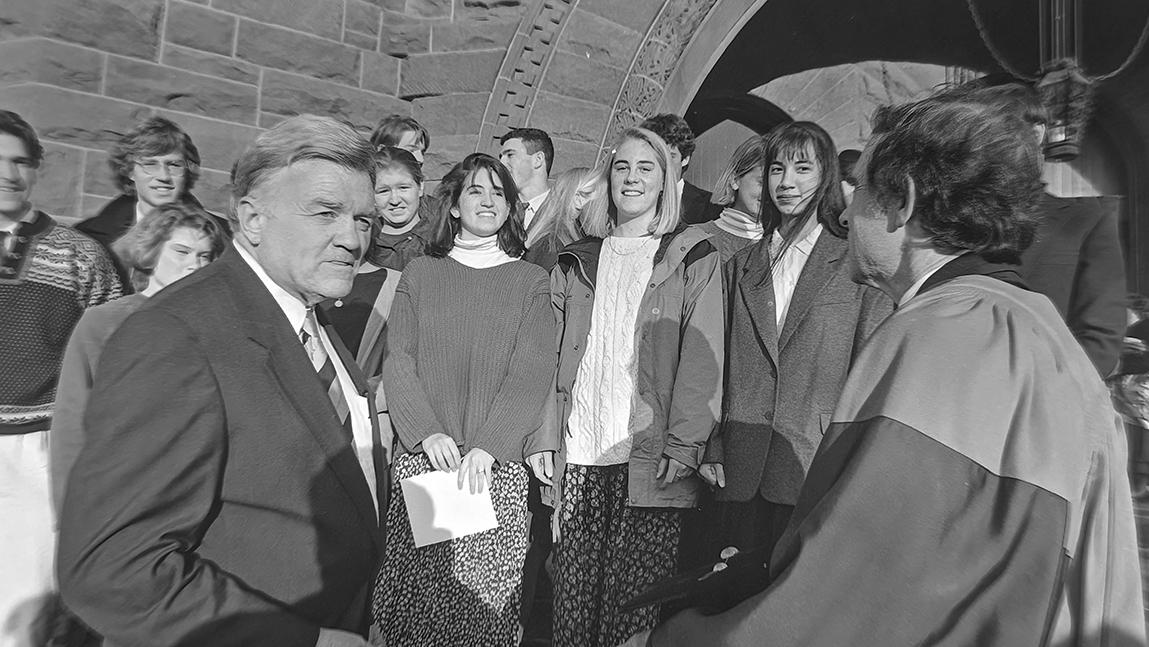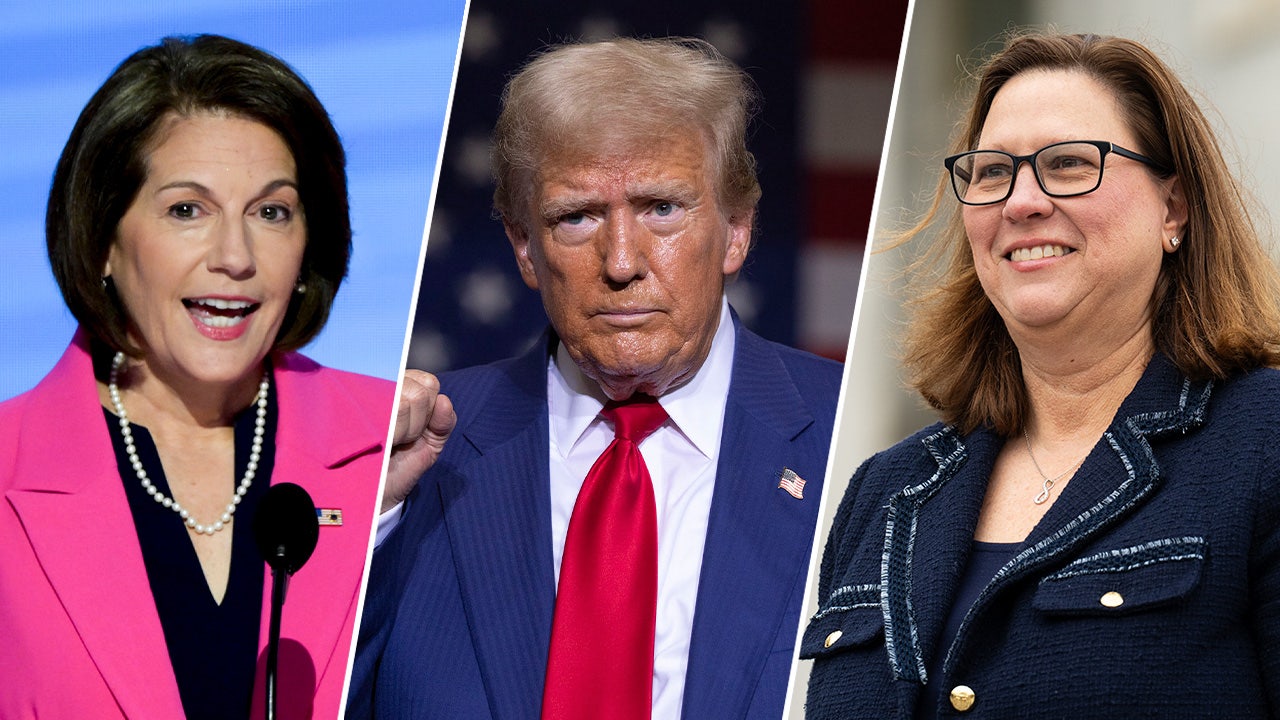North Dakota
2 weeks from 2nd presidential debate, Burgum struggles to hit 3% in national poll

FARGO — With two weeks until the second nationally televised Republican presidential debate, it’s still unclear if
North Dakota Gov. Doug Burgum
will qualify for the stage.
Burgum, whose level of national recognition would benefit from a second appearance before an audience of millions, still hasn’t met the polling requirements to take the stage with other candidates Wednesday, Sept. 27, at the Ronald Reagan Presidential Library in Simi Valley, California.
Despite his campaign’s failure to hit the 3% mark in a national poll, a requirement of the Republican National Committee, Burgum
said in a Monday Fox News appearance
he is still confident he’ll qualify.
“We’re gonna make the debate stage,” Burgum told Fox News host Trace Gallagher. “We had one poll we’re at 4% nationally, it fell 50 respondents short — that’s 750 respondents versus the 800 required by the RNC, but we’re planning on being there.”
Time is running out. The governor has until Sept. 25 to hit 3% support in a national poll, and he’s yet to register above 1% in any recent survey.
Still, there is some good news for Burgum: he’s already met the RNC’s other polling and donor requirements. The campaign says he reached 50,000 individual donors, with at least 200 in 20 different states or territories.
He’s also hit one-half of the RNC’s overall polling requirement. Debate rules say candidates must reach 3% in two national polls, or 3% in one national poll and two polls from early primary states like Iowa and New Hampshire. Burgum has reached 6% support in New Hampshire and 3% in Iowa. He’s run millions of dollars in ads in both states over the past few months, partly thanks to his large personal wealth.
Burgum contributed more than $10 million to his own campaign, according to the most recently available campaign finance disclosures. He’s by far the largest donor to his own campaign.
Money also helped him meet the donor requirements. Burgum, who still does not have the same name recognition as other GOP presidential candidates such as Florida Gov. Ron DeSantis and former Vice President Mike Pence, surprised many this summer when he used a ploy to meet the first debate’s donor threshold.
In July,
his campaign offered $20 Mastercard and Visa gift cards
in exchange for $1 donations, quickly allowing him to hit the 40,000 individual donor threshold to make the August debate in Milwaukee. The campaign also had no trouble hitting the 50,000 donor mark required for the second debate.
Meanwhile, an independent group backing Burgum’s presidential campaign disclosed about $6 million in national ad buys following the Aug. 23 debate. It’s disclosed $13 million in spending so far, but it has done little to move the needle in polls.
If that money and campaigning do work, what happens if the governor makes the second debate?
His first debate performance failed to deliver him a much-hoped-for national poll bump that would have made qualifying for the second debate much easier. Clashes between higher-profile candidates drowned Burgum out, who stuck mostly to policy-focused answers and campaign talking points.
Burgum has said looking to generate soundbites or going after his rivals is not what he thinks Americans want to hear. However, in a recent PBS interview,
he said he plans to be more assertive
should he qualify for the next debate.
As of Tuesday, six candidates have qualified for the second debate, which is airing on Fox Business. They include DeSantis, Pence, businessman Vivek Ramaswamy, South Carolina Sen. Tim Scott, former South Carolina Gov. Nikki Haley, and New Jersey Gov. Chris Christie.
All six participated in the first debate, leaving Burgum and former Alabama Gov. Asa Hutchinson to qualify.
Notably absent from the first debate was former President Donald Trump, who is by far the GOP race frontrunner with more than 50% of GOP voters’ support. He refused to sign a pledge to honor the Republican presidential nominee, another requirement for debate participation.
His campaign mocked the debate as “tryouts” for vice president.

North Dakota
ND HHS encouraging medical students to work in rural areas using scholarship programs

BISMARCK, N.D. (KFYR) – It’s no secret that medical school is expensive. A lot of would-be doctors might opt out of the field because of those costs. Those who do go often need to take jobs in larger hospitals in bigger cities to be able to pay their student loans back. North Dakota Health and Human Services (ND HHS) wants to change that.
Dr. Tyrone Berentson has been working in family medicine at SMP St. Andrew’s in Bottineau for about two and a half years. He grew up on a cattle ranch, and while he completed his residency in Grand Forks, he missed working in a rural community. When he finished training, he landed a job at the hospital in Bottineau.
“I love what a rural community offers. I think being a part of a tight-knit community where you know three generations of the family that you’re working with— I really appreciate that aspect of it. So, my intention is to stay in rural North Dakota,” Dr. Berentson said.
State scholarship programs like the one Dr. Berentson is in can help cover anywhere from $22,000 to $50,000 in tuition for healthcare students. Would-be nurses, physician assistants and counselors qualify, too.
In a news release from ND HHS, Interim Commissioner Dirk Wilke said: “Recruiting and retaining a trained, qualified health care workforce, including in rural and underserved areas, is vital to reaching our goal of being the healthiest state in the nation.”
Dr. Berentson said working in a rural healthcare system lets him connect with his patients. He said people often worry programs like these will attract students who only plan on living in small communities for the duration of their contract, but he said that is definitely not always the case.
“That would discount the benefit for keeping the rural people who were born here and want to stay here,” Dr. Berentson said.
Once Dr. Berentson finishes his five years at St. Andrew’s, his loan repayment contract with the state will be up, but he said he has no intention of leaving anytime soon.
Scholarship applications are open until March 31. You can apply through HHS’ website.
Copyright 2025 KFYR. All rights reserved.
North Dakota
North Dakota aerial applicators set an acreage record in 2024 while recording no fatalities

BISMARCK, N.D. — Aerial applicators in North Dakota treated 5.5 million acres in 2024 — setting a new record while recording no fatal incidents in the year among pilots.
“It’s really astounding when you think about 160 skilled pilots and what they’re able to do,” said Kyle Wanner, executive director of the North Dakota Aeronautics Commission. “When you go back to the ’80s, we had double the amount of aerial applicators, we had double the amount of pilots, and we had double the amount of aircraft. And so we’re doing much more today with less, and that’s due to the incredible work of these skilled aviators and the technology, the larger aircraft that they’re flying.”
The previous record was 5.2 million acres, set in 2015. The average acreage treated since 2001 has been 4 million acres. According to the National Agricultural Aviation Association, aerial applicators nationwide treat approximately 127 million acres of cropland, 5.1 million acres of forests, 7.9 million acres of pasture and rangeland and 4.8 million acres of public health spraying, including for mosquito abatement.
Jenny Schlecht / Agweek
Steve Iglehart, president of the North Dakota Agricultural Aviation Association, said bigger airplanes that can fly faster with more reliable turbine engines play a big role in allowing fewer pilots to cover more acres, as does GPS.
“GPS is a big, huge, huge for aviation,” said Iglehart, an aerial applicator who works in the Garrison area. “Airplanes are just faster and more productive now than they’ve ever been. I started off in the smaller airplane, 150 gallon hopper. You know, it works good for close in, 10 miles, 20 miles out. Then I get a 400 gallon hopper, one. Then you go out farther, 30 miles. Then a 500 gallon hopper — then you go out even a little bit farther and carry more. You can get more done in the shorter time.”
Treatments applied via airplane can include things like fungicides, herbicides and insecticides. Unique agronomic conditions also were involved in the record acreage in 2024.
“So we had a lot of moisture, wet ground in the eastern part. The rain came at the right time. Usually, if you get rain in June, you’re pretty much going to be guaranteed for a fungicide run somewhere,” he said.
Commodity prices were high enough in the spring that farmers saw the need to protect the crop. And if they aren’t using aerial application, farmers realize that they’ll have to apply from the ground. Saving the time on the farm staff, compaction from the sprayer and the wear and tear on the ground sprayer can mean that “sometimes the airplanes are flying for free,” Iglehart said.
“You know, they don’t have to hire somebody. They don’t have to find somebody to mix and load for them. That’s usually the aerial guy’s job. We can go farther. We can go cut across the field faster, get to a location faster than they can, if it’s safe. They got a field 30 miles away? We can get to it faster before a wind can come up. We’ve got the prime conditions to get something done at the right time,” he said.

Contributed / North Dakota Aeronautics Commission
After several
crashes
resulting in
fatalities
among aerial applicators in the region in 2023, a larger focus has been placed on safety. Iglehart said fatigue and the unique situations pilots encounter — like flying low and dealing with power lines — play a part.
“There’s days where you can get about 14 hours just running an airplane,” he said. “It’s a high-stakes game.”
He stressed the importance of pilots getting enough sleep, eating right and staying hydrated and positive as things that can help. But his association also took another step in 2024, putting on an eight-hour course on flying in wires and situational awareness. He credits the course for the clean 2024 flying season and said the association may make it a regular thing.
“I think that course paid dividends, for sure, in this last year,” he said. “It is expensive to have, but it’s cheap insurance when the return on investment is, nobody loses their life or has an accident. Everybody always needs to be reminded of things. Doesn’t matter how old or young you are. It’s just a good awareness thing to have.”

Contributed / North Dakota Aeronautics Commission
All aerial applicators must be licensed by the North Dakota Aeronautics Commission and must report their acreage to the commission by Dec. 1. North Dakota has 78 licensed manned aerial applicators, operating 183 aircraft with 156 pilots, and 21 unmanned aerial applicators, who operate drones in precision agriculture operations.
The unmanned aerial applicator portion is fairly new. The Aeronautics Commission has been licensing drone applicators who provide crop treatments since 2022. The 5.5 million acres treated in 2024 included 70,000 acres treated via unmanned aerial application. Wanner expects the number of unmanned operators to increase.
“The interest continues to grow,” he said. “We have 21 licensed unmanned operators. It might be up to 40 by the end of this year … based on the interest that we’re receiving.”
The North Dakota Legislature will consider during the 2025 session
House Bill 1037
, which would set up grant programs for use of autonomous systems, including drones, in multiple areas, including agriculture. The bill has been referred to the House Appropriations Committee and had not had a hearing scheduled as of Jan. 15.
Iglehart doesn’t know anyone operating a drone for crop treatments in his area, but he thinks they have their place in the industry.
“Where I like to see those things is probably under power lines and around corners,” he said.
He said they’re also useful for small plots where it wouldn’t make sense to “fire up the airplane.”
Wanner stressed that licensing is mandatory for applying crop treatments via drone.
“You can’t just go out there and mix the chemical and start flying that aircraft. There are a couple of things that we just need to ensure that you’re doing prior to that, but it is actually a relatively easy process once you really understand it, and we’re happy to walk through that with anybody,” Wanner said.

Jenny Schlecht / Agweek
The process includes getting a Remote Pilot Certificate from the Federal Aviation Administration, an Agricultural Aircraft Operator certificate from the FAA, a North Dakota Pesticide Certificate from North Dakota State University and an Unmanned Aerial Applicator License from the Aeronautics Commission.
Wanner said properly following those steps are critical in ensuring safety for operators and for the public, even if someone is just spot spraying on their own farm.
“Those are just some things that are critical, because at the end of the day, we want a professional environment. We want a professional environment for our aerial applicators, but also for our unmanned air applicators,” Wanner said.
Getting more pilots in the air
While more acres are getting covered with fewer pilots than in the past, the aerial applicator community still is looking for more young people interested in flying. Like farming, Wanner said it can be a difficult industry to get into, so discussions about how to get people interested and involved are ongoing.
“We want to obviously excite the next generation,” he said, noting that new technology and automation may be interest points for some. “You know, there’s different things like like that may come into play to make things easier moving forward.”
Iglehart said anyone interested in becoming an aerial applicator should contact a local applicator and visit with them about opportunities.
“Basically, they’re going to put you as a loader guy. Get learning and mixing and loading the airplane, get familiar with that. And then if they feel you can handle that well, then you can start applying for your private pilot license. Then you go into just flying a little bit, practicing the spray runs. And then if he feels like you can move on to the next step, he’ll put you in an airplane that you can track your GPS and just learn the basics and be safe,” he said.
North Dakota
NDGF talks hunter safety courses as classes begin around the state

BISMARCK, N.D. (KFYR) – Most of North Dakota’s hunter education courses taught by volunteer instructors happen between January and the beginning of June. Anyone born after Dec. 31, 1961, is required by law to complete a state-certified course if they plan to hunt in North Dakota.
“If you’re going to need hunter ed before this next fall, it’s really important right now to go to our website and get signed up for our text alerts and start looking for a class in your area. A lot of our smaller communities, there’s only 1 or 2 courses a year. In some of our larger communities, those first few classes every year fill up pretty quick in places like Fargo, Bismarck, Grand Forks,” said Brian Schaffer, Hunter Education Coordinator.
There are a couple of options for completing a certified hunter education course in North Dakota.
“The first one is a traditional course that the majority of people who have ever completed a hunter in the state is 14 hours of in-person instruction, with our volunteer instructors going over firearm handling, wildlife conservation, all of those things. And then we also, in recent years, have really developed what we call our home study course, which is a hybrid between in-person learning and online learning. And it’s really gained popularity with kids’ busy schedules and the way kids learn these days,” said Schaffer.
There is a minimum age a student must be to enroll in a course in North Dakota.
“So sign up for a hunter education course in North Dakota, for the traditional course, it’s the calendar year in which a youngster turns 11. And for our home study course, it’s the calendar year in which they turn 12,” said Schaffer.
The demand statewide is still there for hunter education courses, which is why the recruitment of volunteers to teach in rural and larger cities remains vital.
“So there’s many of our volunteers across the state that have been teaching hunter education since the program’s inception in 1979. And it’s a testament to all those volunteer hours and dedication to the program that we were able to hit that 250,000-student certification this past year,” said Schaffer.
If you’re interested in becoming a hunter education volunteer instructor, call the Game and Fish Department at 701-328-6300.
For more information on hunter education courses in North Dakota, visit gf.nd.gov.
Copyright 2025 KFYR. All rights reserved.
-

 Science1 week ago
Science1 week agoMetro will offer free rides in L.A. through Sunday due to fires
-
/cdn.vox-cdn.com/uploads/chorus_asset/file/23935558/acastro_STK103__01.jpg)
/cdn.vox-cdn.com/uploads/chorus_asset/file/23935558/acastro_STK103__01.jpg) Technology1 week ago
Technology1 week agoAmazon Prime will shut down its clothing try-on program
-
/cdn.vox-cdn.com/uploads/chorus_asset/file/25826211/lorealcellbioprint.jpg)
/cdn.vox-cdn.com/uploads/chorus_asset/file/25826211/lorealcellbioprint.jpg) Technology1 week ago
Technology1 week agoL’Oréal’s new skincare gadget told me I should try retinol
-
/cdn.vox-cdn.com/uploads/chorus_asset/file/25832751/2192581677.jpg)
/cdn.vox-cdn.com/uploads/chorus_asset/file/25832751/2192581677.jpg) Technology5 days ago
Technology5 days agoSuper Bowl LIX will stream for free on Tubi
-

 Business6 days ago
Business6 days agoWhy TikTok Users Are Downloading ‘Red Note,’ the Chinese App
-
/cdn.vox-cdn.com/uploads/chorus_asset/file/25835602/Switch_DonkeyKongCountryReturnsHD_scrn_19.png)
/cdn.vox-cdn.com/uploads/chorus_asset/file/25835602/Switch_DonkeyKongCountryReturnsHD_scrn_19.png) Technology3 days ago
Technology3 days agoNintendo omits original Donkey Kong Country Returns team from the remaster’s credits
-

 Culture2 days ago
Culture2 days agoAmerican men can’t win Olympic cross-country skiing medals — or can they?
-
/cdn.vox-cdn.com/uploads/chorus_asset/file/24774110/STK156_Instagram_threads_1.jpg)
/cdn.vox-cdn.com/uploads/chorus_asset/file/24774110/STK156_Instagram_threads_1.jpg) Technology1 week ago
Technology1 week agoMeta is already working on Community Notes for Threads


















